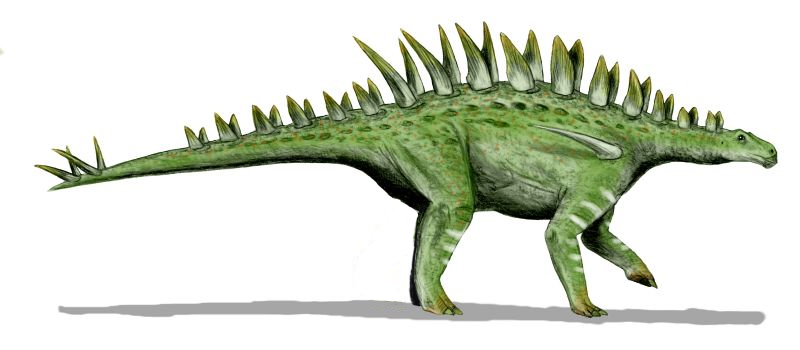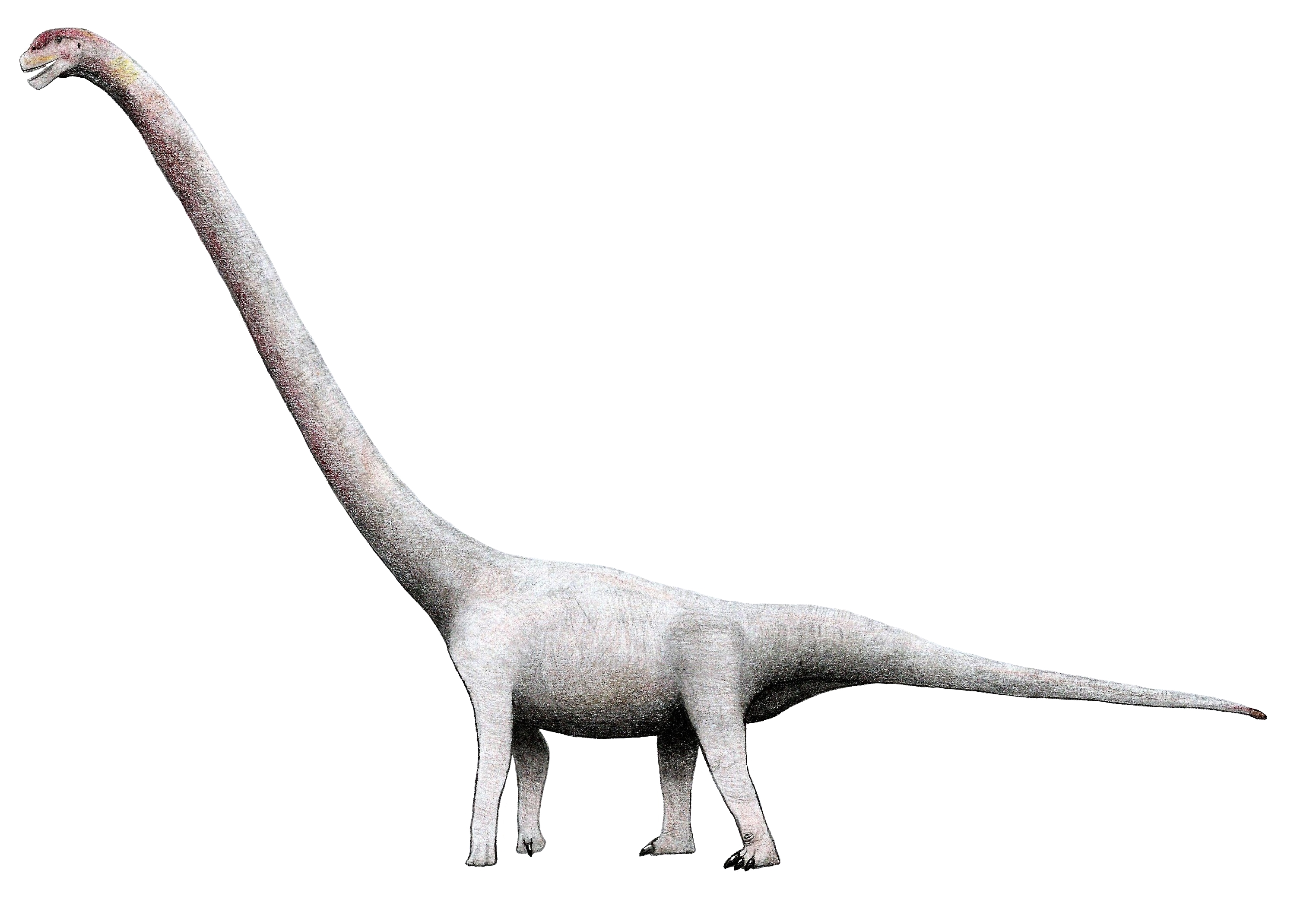|
Huayangosaurus
''Huayangosaurus'' is a genus of stegosaurian dinosaur from the Middle Jurassic of China. The name derives from "Huayang" (華陽), an alternate name for Sichuan (the province where it was discovered), and "saurus", meaning "lizard". It lived during the Bathonian to Callovian stages, around 165 million years ago, some 20 million years before its famous relative, ''Stegosaurus'' appeared in North America. At only approximately long, it was also much smaller than its famous cousin. Found in the Lower Shaximiao Formation, ''Huayangosaurus'' shared the local Middle Jurassic landscape with the sauropods ''Shunosaurus'', '' Datousaurus'', ''Omeisaurus'' and '' Protognathosaurus'', the ornithopod '' Xiaosaurus'' and the carnivorous ''Gasosaurus''. Description Like other stegosaurians, ''Huayangosaurus'' was a quadrupedal herbivore with a small skull and a spiked tail. Like its more famous relative, ''Stegosaurus'', ''Huayangosaurus'' bore the distinctive double row of plates tha ... [...More Info...] [...Related Items...] OR: [Wikipedia] [Google] [Baidu] |
Stegosaur
Stegosauria is a group of herbivorous ornithischian dinosaurs that lived during the Jurassic and early Cretaceous periods. Stegosaurian fossils have been found mostly in the Northern Hemisphere, predominantly in what is now North America, Europe, Africa, South America and Asia. Their geographical origins are unclear; the earliest unequivocal stegosaurian, ''Huayangosaurus taibaii'', lived in China. Stegosaurians were armored dinosaurs (thyreophorans). Originally, they did not differ much from more primitive members of that group, being small, low-slung, running animals protected by armored scutes. An early evolutionary innovation was the development of spikes as defensive weapons. Later species, belonging to a subgroup called the Stegosauridae, became larger, and developed long hindlimbs that no longer allowed them to run. This increased the importance of active defence by the thagomizer, which could ward off even large predators because the tail was in a higher position, pointing ... [...More Info...] [...Related Items...] OR: [Wikipedia] [Google] [Baidu] |
Huayangosaurus BW
''Huayangosaurus'' is a genus of stegosaurian dinosaur from the Middle Jurassic of China. The name derives from "Huayang" (華陽), an alternate name for Sichuan (the province where it was discovered), and "saurus", meaning "lizard". It lived during the Bathonian to Callovian stages, around 165 million years ago, some 20 million years before its famous relative, ''Stegosaurus'' appeared in North America. At only approximately long, it was also much smaller than its famous cousin. Found in the Lower Shaximiao Formation, ''Huayangosaurus'' shared the local Middle Jurassic landscape with the sauropods ''Shunosaurus'', ''Datousaurus'', ''Omeisaurus'' and ''Protognathosaurus'', the ornithopod ''Xiaosaurus'' and the carnivorous ''Gasosaurus''. Description Like other stegosaurians, ''Huayangosaurus'' was a quadrupedal herbivore with a small skull and a spiked tail. Like its more famous relative, ''Stegosaurus'', ''Huayangosaurus'' bore the distinctive double row of plates that charac ... [...More Info...] [...Related Items...] OR: [Wikipedia] [Google] [Baidu] |
Stegosaurus
''Stegosaurus'' (; ) is a genus of herbivorous, four-legged, armored dinosaur from the Late Jurassic, characterized by the distinctive kite-shaped upright plates along their backs and spikes on their tails. Fossils of the genus have been found in the western United States and in Portugal, where they are found in Kimmeridgian- to early Tithonian-aged strata, dating to between 155 and 145 million years ago. Of the species that have been classified in the upper Morrison Formation of the western US, only three are universally recognized: ''S. stenops'', ''S. ungulatus'' and ''S. sulcatus''. The remains of over 80 individual animals of this genus have been found. ''Stegosaurus'' would have lived alongside dinosaurs such as ''Apatosaurus'', ''Diplodocus'', ''Brachiosaurus'', ''Ceratosaurus'', and ''Allosaurus''; the latter two may have preyed on it. They were large, heavily built, herbivorous quadrupeds with rounded backs, short fore limbs, long hind limbs, and tails held hi ... [...More Info...] [...Related Items...] OR: [Wikipedia] [Google] [Baidu] |
Dong Zhiming
Dong Zhiming (Chinese: 董枝明, Pinyin: ''Dǒng Zhimíng''; born January 1937) is a Chinese vertebrate paleontologist formerly employed at the Institute of Vertebrate Paleontology and Paleoanthropology (IVPP) in Beijing. He began working at the IVPP in 1962, studying under Yang Zhongjian, who was director at the time. He has described fossil remains of many dinosaurs. He investigated and described the Shaximiao Formation; an important contribution to science since they are composed of Middle Jurassic beds which do not commonly yield fossils. Early life and education Dong Zhiming was born in January 1937 in Weihai, Shandong. At the age of 13, Dong was introduced to dinosaurs by a museum exhibit showcasing hadrosaur fossils. Dong graduated from university in 1962 with a degree in biology. Career After graduating, Dong Zhiming began working at the Institute of Vertebrate Paleontology and Paleoanthropology (IVPP) in Beijing where he was mentored by Yang Zhongjian, the "father of ... [...More Info...] [...Related Items...] OR: [Wikipedia] [Google] [Baidu] |
Omeisaurus
''Omeisaurus'' (meaning "Omei lizard") is a genus of sauropod dinosaur from the Middle Jurassic Period (Bathonian-Callovian stage) of what is now China. Its name comes from Mount Emei, where it was discovered in the lower Shaximiao Formation of Sichuan Province. Like most sauropods, ''Omeisaurus'' was herbivorous and large. The largest species, ''O. tianfuensis'', measured long, and weighed . Other species were much smaller, as the type species ''O. junghsiensis'' reached a size of in length and in body mass, and ''O. maoianus'' reached a size of and . Discovery and species Initial discovery and ''O. changshouensis'' The initial discovery of ''Omeisaurus'' was in 1936 when Charles Lewis Camp and Yang Zhongjian collected a partial skeleton from strata of the Shaximiao Formation in Szechuan, China.Young, C. C. (1939)On a new Sauropoda, with notes on other fragmentary reptiles from Szechuan ''Bulletin of the Geological Society of China'', ''19''(3), 279-315.Dong, Z. (1983)T ... [...More Info...] [...Related Items...] OR: [Wikipedia] [Google] [Baidu] |
Datousaurus
''Datousaurus'' (meaning "chieftain lizard" or "big-head lizard"; originally named using the Malay ''datu'', after its Chinese nickname ''qiulong'' - literally "chieftain dragon" - but also a pun on its big head; ''da tou'' means "big head" in Chinese) was a dinosaur from the Middle Jurassic. It was a sauropod collected from the Lower Shaximiao Formation in Dashanpu, Zigong Sichuan province, China. It shared the local Middle Jurassic landscape with other sauropods such as ''Shunosaurus'', ''Omeisaurus'', '' Protognathosaurus'', the ornithopod ''Xiaosaurus'', the early stegosaur ''Huayangosaurus'' as well as the carnivorous ''Gasosaurus''. Discovery and species ''Datousaurus'' was named by Dong Zhiming and Tang in 1984. To date, only two partial skeletons have been discovered. Neither had an articulated skull, although one skull has been discovered that has been attributed to the genus."Datousaurus." In: Dodson, Peter & Britt, Brooks & Carpenter, Kenneth & Forster, Catherine A ... [...More Info...] [...Related Items...] OR: [Wikipedia] [Google] [Baidu] |
Shunosaurus
''Shunosaurus'', meaning "shu lizard", is a genus of sauropod dinosaur from Late Jurassic ( Oxfordian) beds in Sichuan Province in China, approximately 159±2 million years ago. The name derives from "Shu", an ancient name for the Sichuan province. Discovery and species The first fossil of ''Shunosaurus'' was discovered in 1977 by a group of students, practising paleontological excavation at a road bank. The type species, ''Shunosaurus lii'', was described and named by Dong Zhiming, Zhou Shiwu and Zhang Yihong in 1983. The generic name derives from "Shu", an ancient name for Sichuan. The specific name honours hydrologist Li Bing, the governor of Sichuan in the third century BC. The holotype, IVPP V.9065, was collected from the Lower Xiashaximiao Formation near Dashanpu, Zigong. It consists of a partial skeleton. Later about twenty more major specimens were discovered, including several complete or near-complete skeletons, skulls and juveniles, making ''Shunosaurus'' on ... [...More Info...] [...Related Items...] OR: [Wikipedia] [Google] [Baidu] |
Middle Jurassic
The Middle Jurassic is the second epoch of the Jurassic Period. It lasted from about 174.1 to 163.5 million years ago. Fossils of land-dwelling animals, such as dinosaurs, from the Middle Jurassic are relatively rare, but geological formations containing land animal fossils include the Forest Marble Formation in England, the Kilmaluag Formation in Scotland,British Geological Survey. 2011Stratigraphic framework for the Middle Jurassic strata of Great Britain and the adjoining continental shelf: research report RR/11/06 British Geological Survey, Keyworth, Nottingham. the Daohugou Beds in China, the Itat Formation in Russia, and the Isalo III Formation of western Madagascar. Paleogeography During the Middle Jurassic Epoch, Pangaea began to separate into Laurasia and Gondwana, and the Atlantic Ocean formed. Eastern Laurasia was tectonically active as the Cimmerian plate continued to collide with Laurasia's southern coast, completely closing the Paleo-Tethys Ocean. A subduction zone ... [...More Info...] [...Related Items...] OR: [Wikipedia] [Google] [Baidu] |
Herbivore
A herbivore is an animal anatomically and physiologically adapted to eating plant material, for example foliage or marine algae, for the main component of its diet. As a result of their plant diet, herbivorous animals typically have mouthparts adapted to rasping or grinding. Horses and other herbivores have wide flat teeth that are adapted to grinding grass, tree bark, and other tough plant material. A large percentage of herbivores have mutualistic gut flora that help them digest plant matter, which is more difficult to digest than animal prey. This flora is made up of cellulose-digesting protozoans or bacteria. Etymology Herbivore is the anglicized form of a modern Latin coinage, ''herbivora'', cited in Charles Lyell's 1830 ''Principles of Geology''.J.A. Simpson and E.S.C. Weiner, eds. (2000) ''The Oxford English Dictionary'', vol. 8, p. 155. Richard Owen employed the anglicized term in an 1854 work on fossil teeth and skeletons. ''Herbivora'' is derived from Latin ''herba' ... [...More Info...] [...Related Items...] OR: [Wikipedia] [Google] [Baidu] |
Skull
The skull is a bone protective cavity for the brain. The skull is composed of four types of bone i.e., cranial bones, facial bones, ear ossicles and hyoid bone. However two parts are more prominent: the cranium and the mandible. In humans, these two parts are the neurocranium and the viscerocranium ( facial skeleton) that includes the mandible as its largest bone. The skull forms the anterior-most portion of the skeleton and is a product of cephalisation—housing the brain, and several sensory structures such as the eyes, ears, nose, and mouth. In humans these sensory structures are part of the facial skeleton. Functions of the skull include protection of the brain, fixing the distance between the eyes to allow stereoscopic vision, and fixing the position of the ears to enable sound localisation of the direction and distance of sounds. In some animals, such as horned ungulates (mammals with hooves), the skull also has a defensive function by providing the mount (on the front ... [...More Info...] [...Related Items...] OR: [Wikipedia] [Google] [Baidu] |
Thagomizer
A thagomizer () is the distinctive arrangement of four spikes on the tails of Stegosauridae, stegosaurine dinosaurs. These spikes are believed to have been a defensive measure against predators.Carpenter, K., Sanders, F., McWhinney, L., and Wood, L. 2005. Evidence for predator-prey relationships: Example for ''Allosaurus'' and ''Stegosaurus''. Pp. 325-350 in Carpenter, K. (ed.) The Carnivorous Dinosaurs. Indiana University Press, Bloomington. The arrangement of spikes originally had no distinct name. Cartoonist Gary Larson invented the name "thagomizer" in 1982 as a joke in his comic strip ''The Far Side, Far Side'', and it was gradually adopted as an informal term sometimes used within scientific circles, research, and education. Etymology The term ''thagomizer'' was coined by Gary Larson in jest. In a 1982 ''The Far Side'' comic, a group of caveman, cavemen are taught by a caveman lecturer that the spikes on a stegosaur's tail were named "after the late Thag Simmons". The te ... [...More Info...] [...Related Items...] OR: [Wikipedia] [Google] [Baidu] |









_grazing_-_20050809.jpg)

